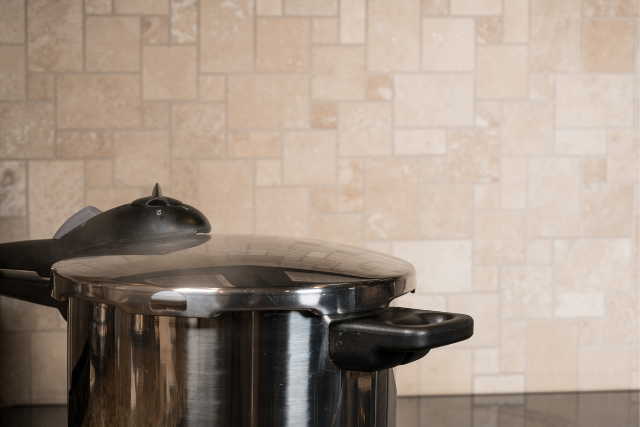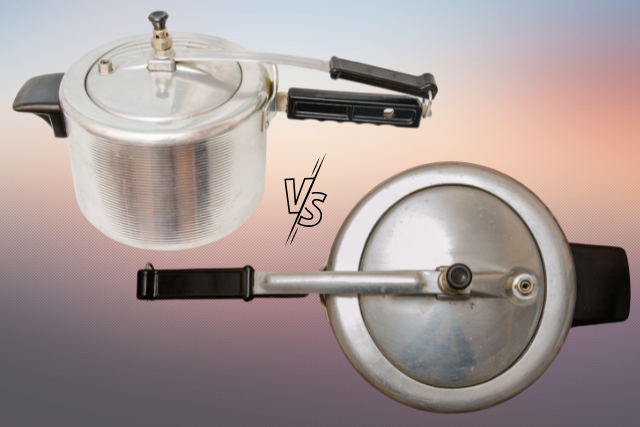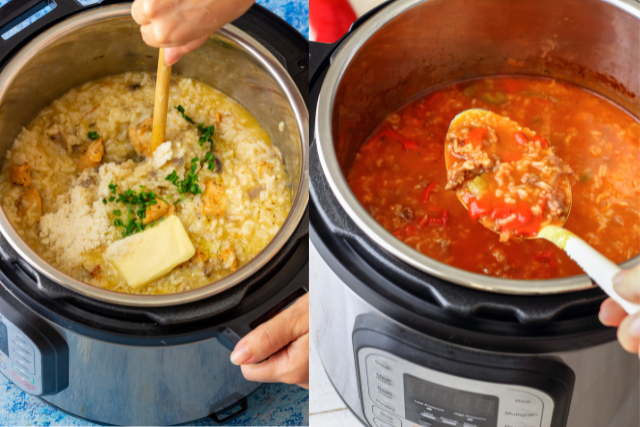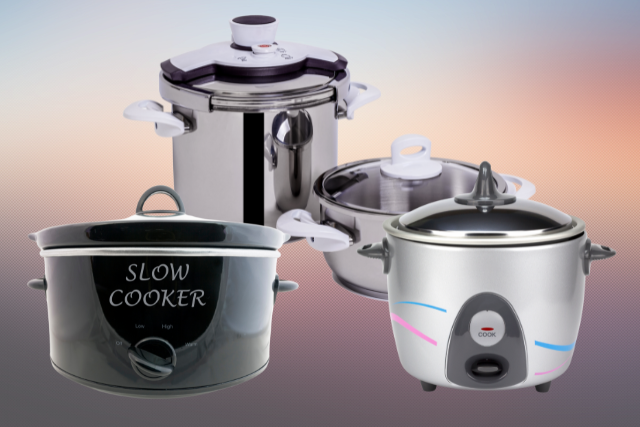Here are the Top Pressure Cooking Mistakes to Avoid

Nothing beats a pressure cooker for on-the-go cooking. It’s a safe tool that helps you cook quickly and eat well. And here are the top pressure cooking mistakes to avoid; rather tips for making the pressure cooking experience a breeze.
A pressure cooker is ideal for busy people who don’t have time to cook. In truth, the pressure cooker does not sacrifice taste or nutrition. It is the only utensil that never compromises food quality.
Top Pressure Cooking Mistakes to Avoid
Even if you use top pressure cooking brands, some blunders can spoil the whole operation. Examine the blunders and avoid them when cooking. here are some of the most common pressure cooker blunders to avoid for the finest cooking results and the safest experience.
Not reading the pressure cooker manual
Knowing everything there is to know about your pressure cooker, including its parts and operations, is always beneficial. Your user handbook contains all of this information. but the majority of people are lazy. They would rather not accomplish something that requires time and effort, such as reading complex instructions. Even when forced to use a new electric pressure cooker, most inexperienced users will pass through the instructions, assuming that the majority of the information can be gleaned from common sense.
But in any case, reading the pressure cooker manual or handbook is the first step in operating a pressure cooker. It tells you what you should and shouldn’t do with your pressure cooker. This information could include things that could void your warranty and how to avoid any danger. This can be found under the section on safety hazards.
Stop using a cheap pressure cooker
If you use an outdated or cheap pressure cooker, you are more likely to encounter problems with the locking system. The locking mechanism or rubber gasket maintains the lid in place while cooking. Check for steam coming from below the lid. It will take longer to cook. Nowadays, pressure cookers won’t work unless the necessary locking system is in place.
Recommended Buying

Too much extra Liquids
Excess liquid can damage your pressure cooker cooking. A pressure cooker evaporates less liquid. So, adding too much water and sauce will ruin your cooking. More moisture will leave the food soggy and bland. It also leaches nutrients from the gravy.
Don’t overfill your pressure cooker
Don’t put too much food in a pressure cooker. Never put more than two-thirds of the food in a pressure cooker. Also, never overfill a pressure cooker with food. The safety valves may also be activated, especially if there is too much food in the pot. Overfilling a pressure cooker has a variety of consequences, including flavor and texture loss. Food is broken down by too much pressure. When it comes to dangers, if the pot is overfilled, the food might potentially block the pressure valve. If you don’t follow these basic principles for pressure cooking, the pressure cooker won’t work properly, impacting the quality of the meal.
Cooking Time Excess
A pressure cooker allows you to cook food rapidly in a sealed vessel using high-pressure steam and water or a water-based cooking liquid. Steam builds up inside the pressure cooker as the temperature of the liquid rises and it begins to boil, resulting in a significantly shorter cooking time. The most common cooking blunder is overcooking. Cooking in a covered pot takes less time than cooking in an open pan. In fact, overcooking food in a pressure cooker reduces its nutritional value.
Overcooking causes nutritional loss, making cooking a messy affair. Always start with the lowest cooking time; you can always cook under pressure for a few minutes longer until the texture you want is achieved.
Let go of the pressure
Use an appropriate pressure-release method, according to the recipe, once the food has finished cooking under pressure. If you don’t want to decrease your electric pressure cooker or your personal lifespan, never try a cold-water release with it. Each pressure cooker has a safety valve that partially releases the steam within to control the internal pressure and prevent over-pressurization. This keeps the item from exploding, which might be extremely dangerous and frightening. Modern pressure cookers, on the other hand, have become incredibly safe and simple to operate and come with a variety of safety measures.
Don’t cook breaded meat
Breaded meats or vegetables, even when put on a rack, are not suggested since the breading will become soggy while the pressure cooker cooks with steam. The breading may potentially slide off the meat, causing the pressure cooker’s bottom to burn. Along with breaded meat, avoid cooking these foods in your pressure cooker. Or in any case, if you want to cook these items, follow the steps given in the article and enjoy a safe cooking experience.
Don’t choose the wrong Pressure Cooker Size
When purchasing a pressure cooker, consider the required size. 6-8 quarts is normal. Choosing the wrong one will make cooking harder. Either the dish is uncooked or it is overcooked.
Choose the proper one and you will have a great time cooking.
Not following the cooking times and temperatures
Electric pressure cookers have extremely particular cooking times, thus if yours says a 30-minute high-pressure time, you cannot modify it to 45 minutes for food safety concerns. If you use the wrong setting in your electric pressure cooker, your supper may be undercooked or overcooked. The temperature modes on electric pressure cookers are varied and depending on the recipe, you’ll need to choose between high and low-pressure cooking.
Recommended Buying








